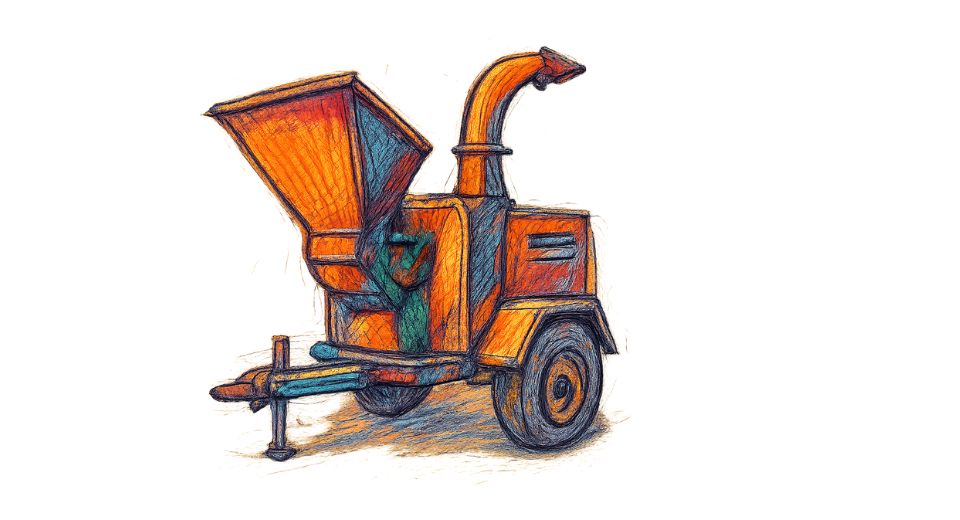
Sep 15, 2025

The Europe Wood Chipper Market by Metastat Insight is an industry that has been steadily growing its impact among industries related to forestry, landscaping, agriculture, and waste management. Wood chippers are no longer seen as specialized machinery for niche applications but are now a common fixture in operations that deal with the management of biomass and recycling organic material. In Europe, where sustainability and resource efficiency are immediate concerns, the function of wood chippers has expanded beyond mere mechanical application to a more general role in assisting effective material handling practices. This has enabled the market to excel not only in conventional forestry, but in a wider range of activities associated with both commercial and municipal operations.
The versatility of wood chippers in the European setting has been impressive. They are currently part of workflows from high-level industrial uses to low-level operations like garden care or landscaping services. Their ability to transform wood waste into valuable by-products, either in the form of mulch, fuel, or compost materials, has presented tangible solutions to dilemmas in many industries. This has also helped decrease the cost of organic waste and at the same time generate value-added products. For municipalities, companies, and even small businesses, such efficiency is not just a matter of disposing of waste but maximizing opportunities from what before was deemed useless.
Technological advancements have continuously influenced the Europe Wood Chipper Market. New equipment has increased safety, energy management, and accuracy compared to previous models. There have also been the development of compact models designed to meet smaller-scale demands, alongside the continuation of industrial applications that demand continuous throughput by the heavy-duty machines. Europe with its extensive range of industries and environmental regulations has become a arena where innovation in the design of wood chippers is not simply promoted but anticipated. The equipment is being designed for diversified terrains, climatic conditions, and operating demands to ensure that they are meaningful across diverse groups of users.
The commercial environment in Europe has also imparted special aspects to the evolution of the wood chipper industry. With the laws surrounding waste disposal and recycling processes becoming more stringent day by day, wood chippers now find themselves as equipment that enables companies and municipalities to stay on the right side of the law while ensuring operating effectiveness. This convergence of regulatory frameworks and technological innovations has created a setting in which investment in such equipment is perceived as both a utilitarian and a strategic choice. It illustrates the manner in which equipment originally viewed as supplementary has come to assume primary significance in wider objectives in waste management and sustainability.
A second point of interest lies in the geographical distribution across Europe itself. Those with large forest cover use wood chippers as must-haves for high-capacity timber processing, whereas those whose forest cover is relatively small use them in urban and suburban settings for landscaping and waste minimization. This diversity means that the market is not captured by a single kind of consumer but extends to a range of purposes and practices. From Scandinavian countries with age-old forestry traditions to highly populated areas where city refuse needs to be controlled efficiently, the wood chipper has established a specific function.
Economic changes and increasing ecological concern in Europe have helped create steady demand growth. Wood chippers are increasingly being viewed by businesses as serving not only short-term functions but also broader sustainability objectives. The manufacturing of biomass power, which is largely reliant on effective processing of raw material, has served to further emphasize the role of these devices. By allowing wood and other organic material to be converted into appropriate feedstock, wood chippers aid in renewable energy programs and underscore Europe's long history of adhering to cleaner energy sources.
Even with its advancements, the Europe Wood Chipper Market has challenges associated with operational expenditure, maintenance needs, and skilled handling requirements. The equipment has to be long-lasting in order to continue operating day in and day out, yet capable of being adjusted for various conditions. The manufacturers and providers in this industry keep improving their strategies to address such challenges and continue to be reliable while trying to handle expectations regarding efficiency and safety. This continuous adaptation gives testament to the determination of the market and its ability to develop in tandem with wider industrial and societal demands.
Ultimately, the Europe Wood Chipper Market as revealed by Metastat Insight speaks to more than the exchange of equipment; it speaks to a broader cross-pollination of technology, sustainability, and economic sensibility across the continent. As design continues to improve, a widening range of application, and ongoing importance to both large and small industries, wood chippers have established themselves as irreplaceable equipment in European material management. The industry will continue its evolution, adjusting to changing priorities while it continues to be a significant contributor to efficiency and sustainability for European industries.
Drop us an email at:
Call us on:
+1 214 613 5758
+91 73850 57479